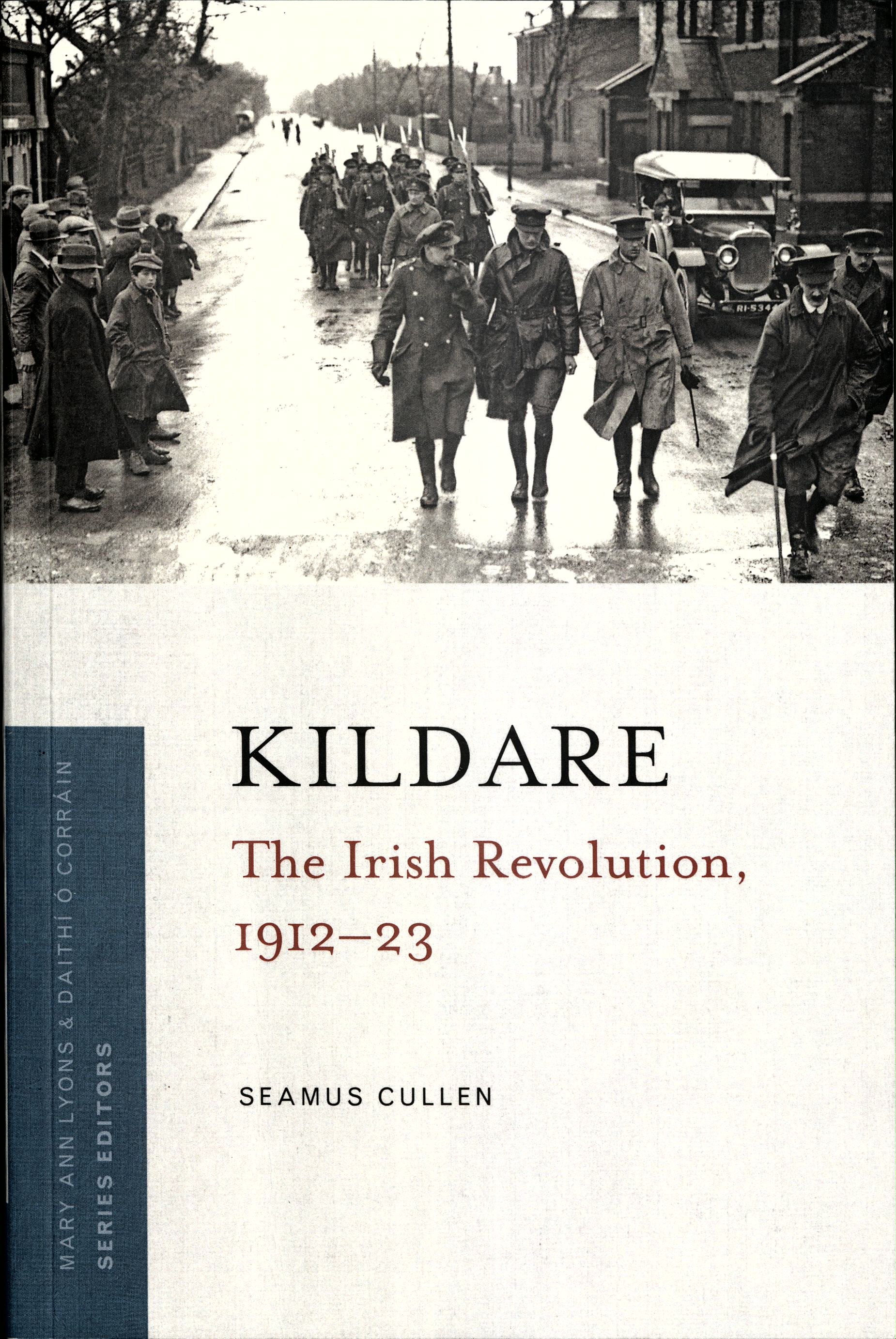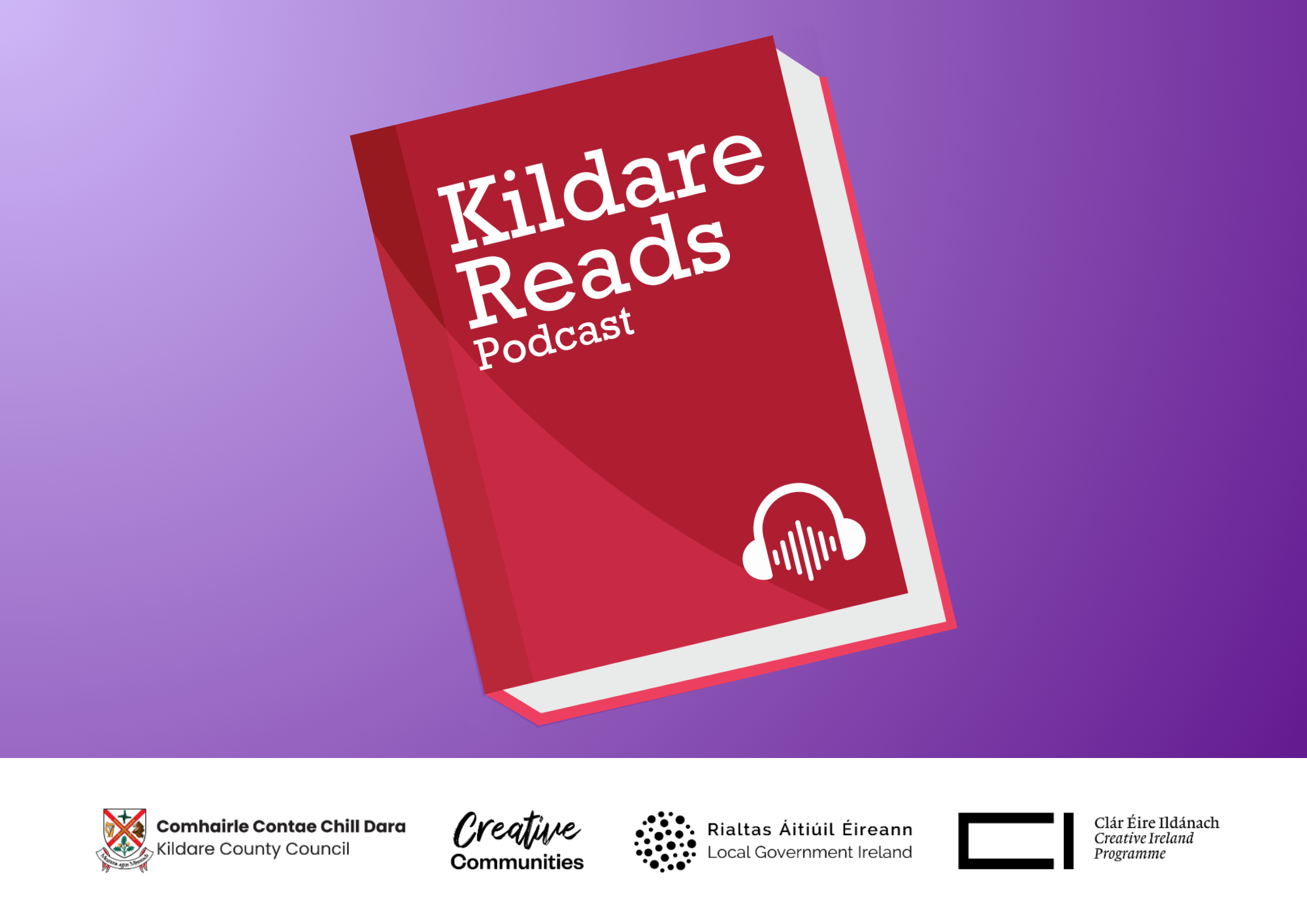
Author: Dr Seamus Cullen
Review by: Kevin, Local Studies Department- Newbridge
For over a decade, Dublin-based publisher Four Courts Press have published the excellent Maynooth Studies in Local History series. With over 150 titles in total, this series has contributed immensely to promoting the study of local history in Ireland. It has also ensured that valuable local history surveys that may not otherwise be seen in print are widely published. Many Kildare authors and subjects have featured in the series down the years, with a study of Morristown Lattin due to be published later this year. Four Courts Press have recently turned their attention to the Decade of Centenaries period with their latest series The Irish Revolution, 1912-23. This series, edited by Mary-Ann Lyons and Dáithà Ó Corráin, has the ambitious objective of publishing a volume for each of all thirty-two counties in Ireland during the 1912-23 period. This book, by well known Kildare historian Dr Seamus Cullen, is the Kildare contribution to the series and is a very welcome addition to the study of County Kildare in the 1912-23 (Decade of Centenaries) period.
What is immediately apparent from reading this publication is the exhaustive research undertaken by the author. Archives and libraries across the U.K. and Ireland have been mined for relevant primary source material that provide insights into County Kildare in the revolutionary years. Extensive use has been made of the valuable Military Archives records, along with extensive collections available in the National Library of Ireland, the National Archives and elsewhere on the island. The most productive research for this study was undertaken in British archives however, which provide a fresh and valuable insight into what happened in County Kildare for much of the period. Impressive use of contemporary newspapers, printed reports and secondary source material is also made by Dr Cullen who methodically references throughout the book.
As hinted above, it is the use of British archives that particularly ensures that this book adds further to our understanding of County Kildare in the 1912-23 period. As a county with a very strong British Army presence – both with the Curragh and barracks located in Kildare, Naas and Newbridge – County Kildare differed to the vast majority of counties in Ireland. This book emphasises the strong economic ties that resulted as a consequence of the British Army presence in the county, with numerous hotels, public houses, newsagents, grocers and other retail businesses in mid-Kildare entirely dependent on the British Army for their existence. Guinness archive records emphasise the extent of business conducted by the company in the public houses around the Curragh! The use of British records also provide fresh insights into events such as the Curragh Incident, the 1916 Rising and the conduct of the War of Independence in the county.
The evolution of the War of Independence in County Kildare is dealt with in great detail. The late historian Michael Hopkinson dismissed the contribution of County Kildare’s “large scale inactivity†in a paragraph in his seminal 2002 book on the War of Independence. Although not quite as wild as Eoin O’Duffy’s claim in 1933 that County Kerry had played no significant part in the War of Independence – he had earlier been hit by a hammer by an angry mob in Tralee! – the work of James Durney and others over the past decade has undermined Hopkinson’s claim by documenting extensive republican activities that took place throughout County Kildare during the War of Independence. Cullen has built on this work, highlighting in intricate detail the activities of the various I.R.A. units across the county and in the immediate hinterland (including those in bordering counties that operated in County Kildare). The key role played by County Kildare republicans in the overall intelligence war against the British administration, with two moles in the R.I.C. County Inspector’s Office in Naas, is backed up with various sources. The activities of Cumann na mBan,and the labour movement in the War of Independence struggle, along with the position of the local Unionist community and the decline of the Irish Parliamentary Period post-1916 are all discussed in great detail. This is one of the strengths of the book – it provides a broad overview of all the various strands in the political and military life in County Kildare throughout the 1912-23 period and doesn’t just focus on the I.R.A. V. British authorities conflict. Labour strikes, the Irish language movement, the experiences of the Unionist and Protestant community are among the groups included in the book with extensive referencing throughout.
The centrality of County Kildare during the withdrawal of the British Army in 1922 is impressively documented also. This was a seminal event in the history of County Kildare over the past two hundred years. It also differentiates County Kildare from the vast majority of counties in Southern Ireland. The description of the withdrawal of the British Army and its economic impact on the garrison towns is particularly well covered. The book also goes into much detail on all of the various events and actions that took place in County Kildare during the Civil War. The split in republican forces, the 1922 and 23 elections, the various military incidents during the Civil War and the impact on the local community are all well covered. Cullen also convincingly argues that County Kildare – along with Dublin – suffered more than all other counties as a result of the execution policy of the Free State Provisional Government during the latter stages of the Civil War. His thesis that County Kildare returned to its pre-Redmondite roots (albeit under a pro-Treaty label) after 1923 is thought-provoking, although is open to question. The omission of the 1922/3 farm labourers strike in South Kildare (and particularly the role of Christy Supple and the reaction of the authorities to the strike) and the demise of the Board of Guardians/workhouses is one of the few events not really covered in what is a superbly researched book.
As a read, the text of this important publication generally flows well and is broken up into manageable chapters for the casual reader. There is little evidence in the text that it is derived from a doctoral dissertation, which can often blight such publications. It perhaps could have profited from sub-headings in each chapter (e.g. the move from the 1913 lockout to the unrelated 1914 Curragh incident takes place by the insertion of a new paragraph). The opening and final paragraphs of some chapters are somewhat repetitive also (summarising what is to come or what has been highlighted in the chapter) although this may be a feature of the series publisher and may be welcomed by some readers. What is without doubt is that this publication adds greatly to our knowledge of County Kildare in the 1912-23 period. It is superbly researched, well told and will be a reference book for the Decade of Centenaries period for many years to come. It will hopefully inspire others to delve into other aspects of this period in greater detail. The content in this publication and the research work undertaken by Dr Cullen will feature heavily in the busy programme of activities organised through the County Kildare Decade of Centenaries Programme in the coming years. This book is strongly recommended as a survey of County Kildare for the revolutionary period of 1912-23. A copy of this book has been ordered for all branch libraries in County Kildare and will also be available to purchase from local independence bookshops throughout Kildare.
Twitter: @cilldara2016
Facebook: Kildare Decade of Commemorations
www.kildare.ie/ehistory for more content on the 1912-23 period.





Leave a Reply